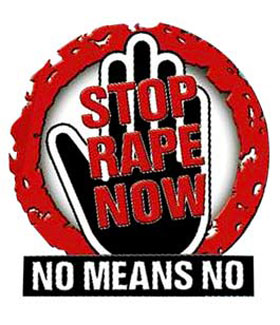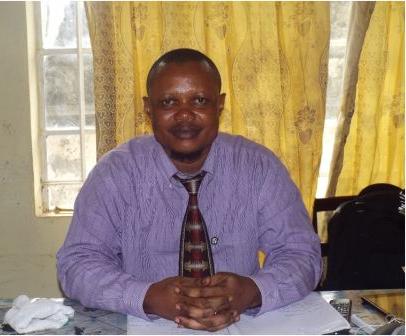Child labour and the future of Sierra Leone
Many would agree with me that children are indispensable asset to the growth of any nation. The Europeans, prior to the 17th Century, were hell bent on exploiting children by working on cotton farms and giving them pittances. But with the industrial revolution and the invention of machines, they subsequently abandoned the exploitation of human labour, especially the use of child labour and all the abuses that went with it. Â (Photo: Children mining in Tongo)
The old age plantation mentality which the industrial nations of the west abandoned more than a century ago is still a common place experience in Sierra Leone today, where children are used as industrial tools. This practice of using children for selfish business enterprises and labor is dehumanizing and does not portend well for the future of our children.
Children in the capital, Freetown and provinces are being deprived of their fundamental rights such as the right to education. For instance, instead of developing the potentials of these children in a meaningful and sustainable manner, they are used as income generating tools by some heartless and unproductive parents. It is like the children are the poverty alleviators of these poverty-stricken homes. Â
Scores of children who find themselves in the city of Freetown are used as hawkers, selling variety of items ranging from bread selling, water to pulling wheelbarrows. Whereas in the provinces, children are subjected to the back-breaking job of alluvial mining, farming or woodcutting. All of these activities in a way prevent the children from going to school.
According to the International Labour Organization (ILO) Report 2010, it has been recognized that for over a decade now, child labour remains a fundamental challenge confronting human rights defenders. The issues is directly related to one’s freedom of association; the right to collective bargaining, the abolition of forced labour and non-discrimination in occupation and employment.
However, despite the enormous social reforms that have been generated around this sensitive issue, it is estimated that more than 200 million children worldwide are still engaged in child labour and a staggering 115 million at least, are subjected to its worst forms.Â
Nonetheless, it has been established that child labour remains the order of the day in places like Kono in the Eastern province and most recently in a place called Gondama in the Southern region of Sierra Leone. Disappointingly, in Kono District and its immediate environs, children rather than going to school find safe haven in mining especially in dangerous pits in order to eke a living. “This is sad,†said one child rights activist in Kono, Mohamed Wuladeh who lamented that at the end of the day an infinitesimal amount is doled out to thesechildren in return for their service.
Mr. Wuladeh has also marveled at the increase in the number of children under the ages of 12 and 15 years who flood the diamond sites during the morning hours looking out for potential employers to engage them in dangerous mining activities.
Sadly though, most of these child-miners have ended up dying of chronic pneumonia and other body pains, as it has been confirmed by some district health officials.
In the same vein, Mr. Wuladeh further disclosed to this reporter that while in the process of extracting gravel from pits some children have been killed through landslide which their employers have failed to account for.
Quite recently, the illegal child mining activity has been spotted at Gondama in the Tikonko Chiefdom, Bo District.
It could be recalled that during the war era and even after the war, a flourishing diamond activity went on around Jerehun along the Bo-Kenema highway. But this time around, it is not the mining in diamonds but in sand to construct houses. And from what this writer gathered, children are the key players in this sand mining.
Other places of rampant child labour activity include Makeni and Kambia, in the northern part of Sierra Leone. Symptoms of child labour are vividly demonstrated on the highway leading to those places. In this part of the country, children are used by their biological parents to fend for the entire family members. Certainly, some children are now potential ‘rice winners’ for their families.
Furthermore, tangible evidences of child labour are common in market places especially at night including the popular Abacha Street and other places in Freetown. While these child abuses are going on, many concerned citizens wonder what has been the role of the Ministry of Social Welfare and Children’s Affairs in getting children off the streets and ensure that their rights are protected.
What has exacerbated the bleating situation of child labour in Sierra Leone is the endemic nature of rape which has targeted not only full grown women but minors between the ages 6 and 7. They have become preys of pedophiles.
The apparent child labour menace and the ubiquitous rape cases flooding our local news outlets have been described by child rights activists as a bleak for the country’s future. They have contended that a country’s economic power lies on a potential youthful population to boost the progress of the nation. But in a situation as it is now been manifested in Sierra Leone, where the growth of children is being tampered with by grumpy business people and politicians alike, it is crystal clear that the country’s future is undermined. Â
Stay with Sierra Express Media, for your trusted place in news!
© 2010, https:. All rights reserved.







ade-toks ilorin
/
The subject of child labour and its
23rd June 2010associated evils is one of the most urgent and pressing wrongs in our country sierra leone.
with so many obstacles to progress in our land this subject should be at the top of our to-do list.we should not lose faith but instead join the fight against this threat to the future of this land.